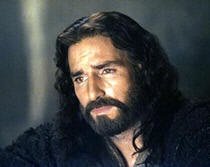Rethinking Myth and the Heart II
 There was no real siege of a city. No army laying waste to the countryside or laying down barbed wire. Rather, this song was describing the devastation of a heart that had been crushed and wounded by another and the mission to recover something precious that had been lost. Instead of simply saying that this man recognized that he had hurt someone he cared deeply about and now understood that he needed to make amends, Sting portrayed the entire scenario in a mythical setting, a setting that helps to understand this event in a deeper and more meaningful manner.
There was no real siege of a city. No army laying waste to the countryside or laying down barbed wire. Rather, this song was describing the devastation of a heart that had been crushed and wounded by another and the mission to recover something precious that had been lost. Instead of simply saying that this man recognized that he had hurt someone he cared deeply about and now understood that he needed to make amends, Sting portrayed the entire scenario in a mythical setting, a setting that helps to understand this event in a deeper and more meaningful manner.Myths and stories help us to place the events of our lives in the proper perspective. Many of them have survived the vast millennia of human existence because they speak to us about the things that are true in life, the things that really matter, and the things that all people, regardless of time or culture, experience.
The great stories that have moved us in a multitude of ways do so because they speak to us at the level of the heart. This current generation has a wealth of “head knowledge.” They know that light travels at 186,000 miles per second, and they can search the Internet to discover that Tahiti is the largest island in the Society Islands chain. “Heart knowledge,” however, is conspicuously absent in today’s youth, and it is sadly reflective of our society as a whole.
The great teachers throughout history have relied on stories to communicate something deeper, something that is impossible to communicate using mere facts and figures. Plato taught his students about encountering the unexplainable through a story that we refer to as Plato’s Cave. He told the tale of a group of people who had been born into captivity, living the whole of their lives in a dark cave where the only source of light was a fire pit. Shadows danced on the walls of this cave, with the occupants having no awareness of the passing of day or night. All was the
 same. One day, one of the men who had spent his entire life in this cave escaped his subterranean confines and ventured outside to see the world. When he saw the brilliance of the sun in the blue sky, he fell to his knees in awe and reverence. Upon his return to the darkness of the cave, he tried to explain the wonderful sight he had witnessed on the surface. The man quickly became frustrated because no one was able to comprehend the beauty and power of the sun. The only thing they were able to understand was that the sun was like the fire pit.
same. One day, one of the men who had spent his entire life in this cave escaped his subterranean confines and ventured outside to see the world. When he saw the brilliance of the sun in the blue sky, he fell to his knees in awe and reverence. Upon his return to the darkness of the cave, he tried to explain the wonderful sight he had witnessed on the surface. The man quickly became frustrated because no one was able to comprehend the beauty and power of the sun. The only thing they were able to understand was that the sun was like the fire pit. Plato’s students were aghast at the pitiful comparison of the glory of the sun to a mere fire pit. This story explains the challenge of such a mission with much greater authenticity than by simply saying that it is hard to explain something to someone who has not experienced it.
 Jesus taught his disciples through the use of parables, stories intended to convey a deeper truth about life. The parable of the Seeds and the Sower is, at least on the surface, a story about a farmer who scatters seeds across his land, with the seeds landing on various types of soil. Some seeds fall upon hardened, sun-baked soil, never getting a chance to germinate. Others land on fertile soil and take root; however, weeds eventually crowded out the young plants. But some of the seeds land on good soil, taking root and turning into full-grown plants. Jesus masterfully uses this story as a metaphor for the condition of a person’s heart, their inner life.
Jesus taught his disciples through the use of parables, stories intended to convey a deeper truth about life. The parable of the Seeds and the Sower is, at least on the surface, a story about a farmer who scatters seeds across his land, with the seeds landing on various types of soil. Some seeds fall upon hardened, sun-baked soil, never getting a chance to germinate. Others land on fertile soil and take root; however, weeds eventually crowded out the young plants. But some of the seeds land on good soil, taking root and turning into full-grown plants. Jesus masterfully uses this story as a metaphor for the condition of a person’s heart, their inner life.Stories speak to us in a way nothing else can. If we want to offer real hope and help to the young people in our spheres of influence, we must open our eyes and our hearts to the myths, fables, and stories of our youth—the stories that really mattered, that inspired us to be something greater. We will need them!



0 Comments:
Post a Comment
<< Home